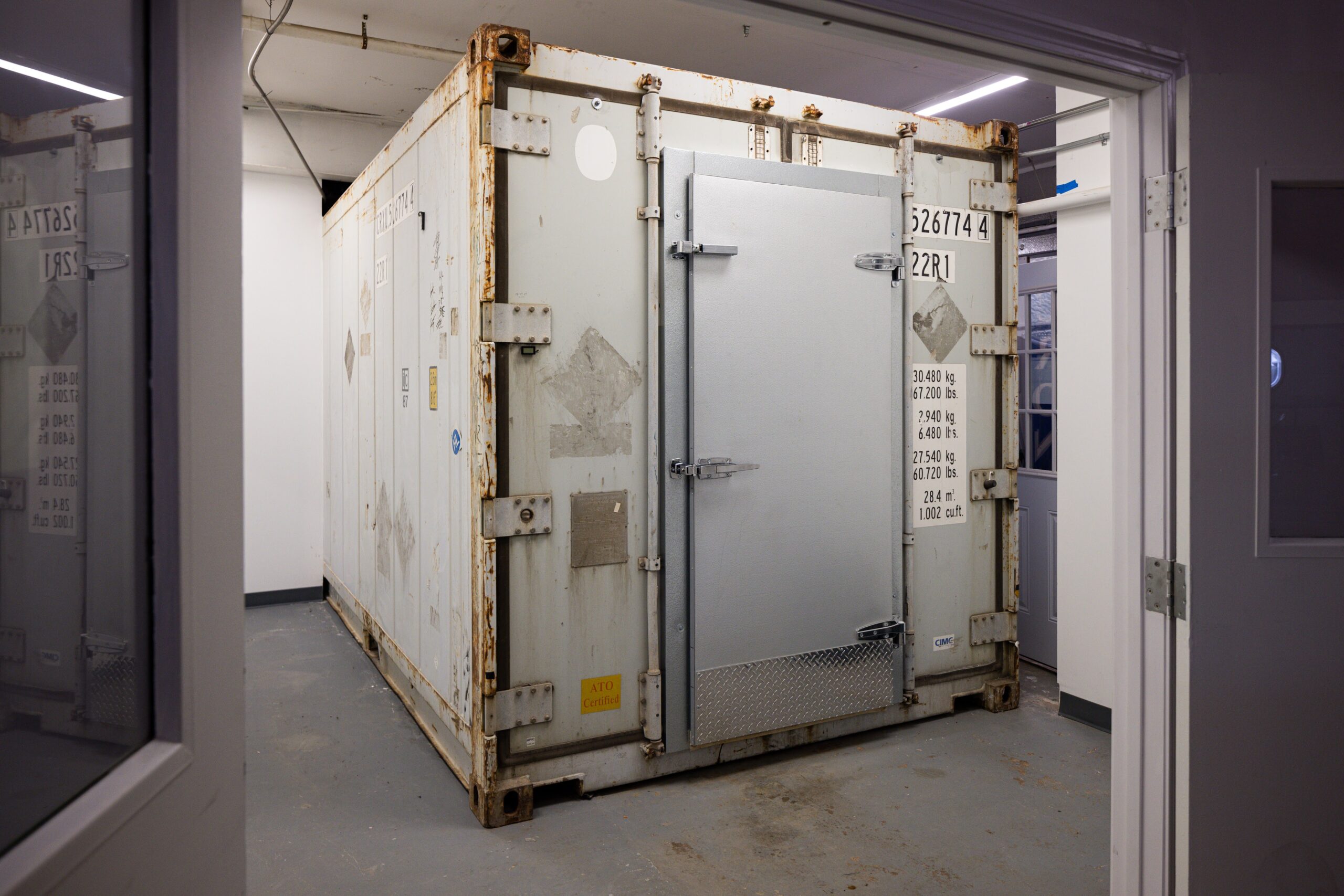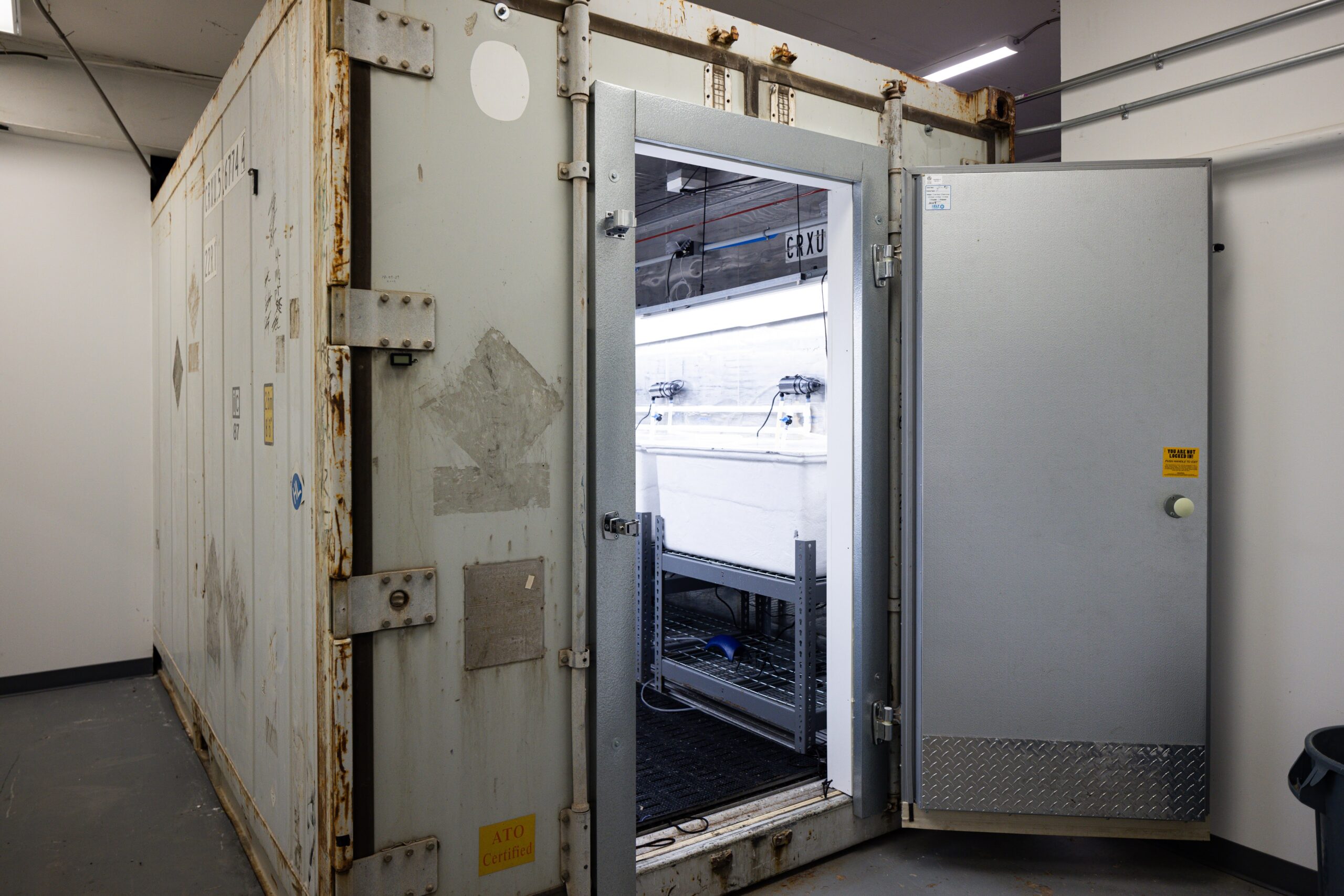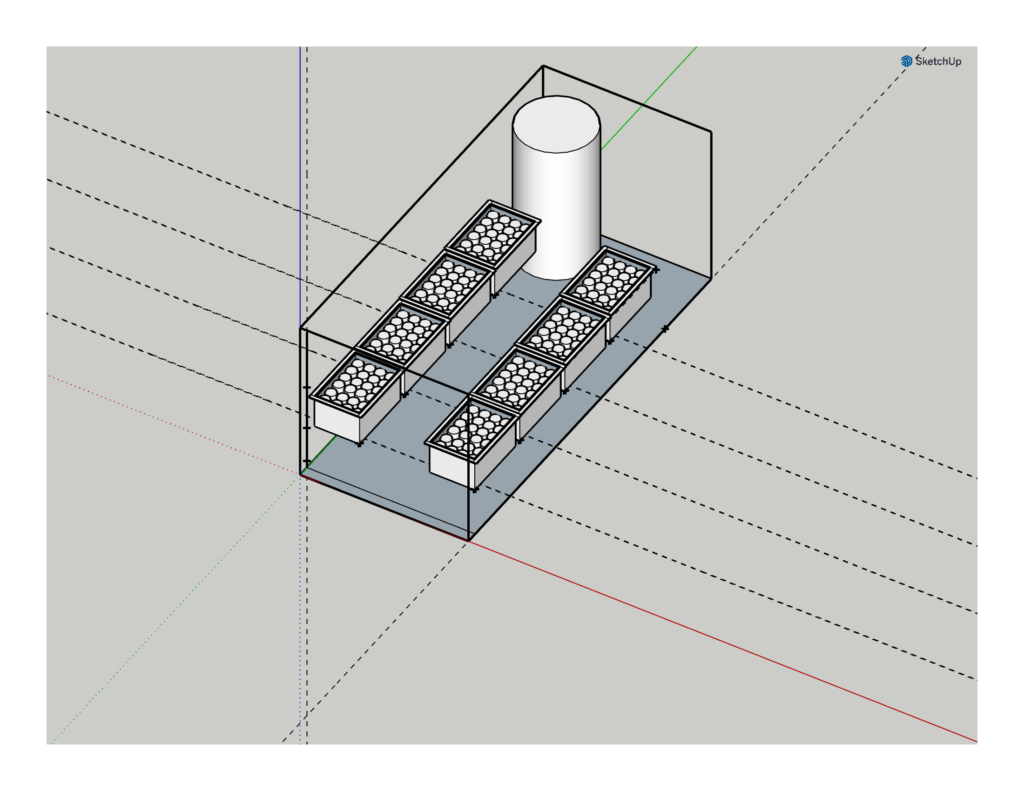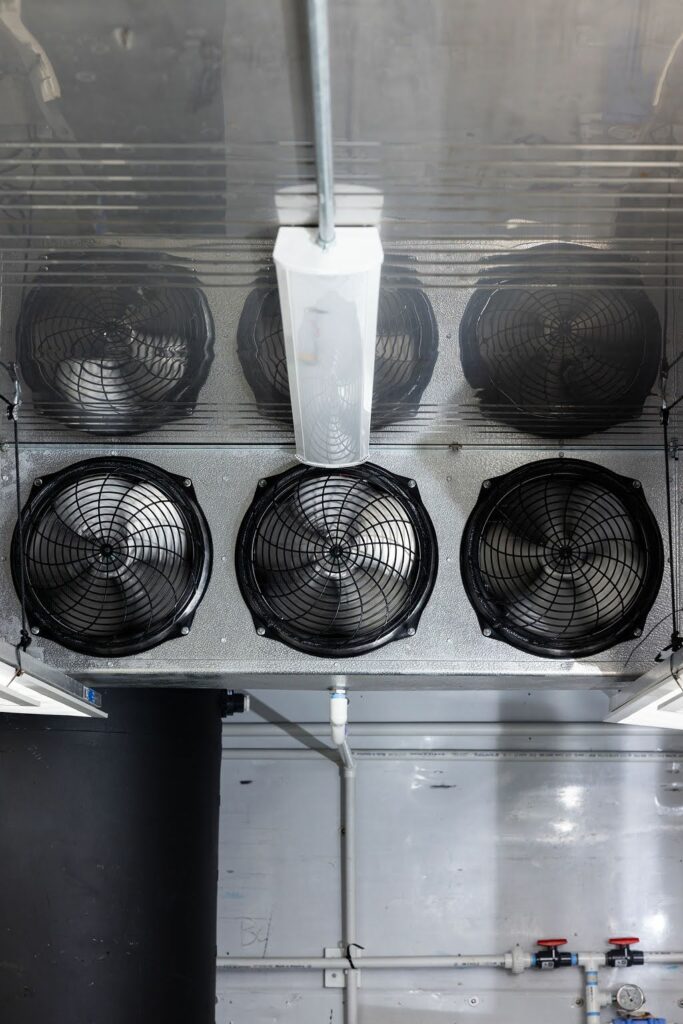Back to: Seed Production Pathways to Scale
Now, let’s take a closer look at the envelope of our nursery. The envelope refers to the physical structure and features that make up the facility’s walls, floor, and access points. Understanding these elements is crucial for creating the right environment for our kelp cultivation.
Our kelp nursery facility is housed in a 20-foot refrigerated shipping container that had reached the end of its primary use. These containers are a fantastic starting point due to their insulation properties. They come with a robust 1.5-inch foam insulation layer, which helps maintain the right temperature for kelp cultivation. Inside, you’ll find a stainless steel liner, which is excellent for durability as well as attaching fixtures and mounting systems, and an aluminum grate floor with a drainage plane and drains in the corners for ready cleaning.
Cooling System Considerations
The facility comes with a built-in cooling system to regulate the temperature. However, it’s worth noting that this cooling system can be quite noisy, which can be a challenge for operators working inside.
Additionally, it requires a three-phase 480-volt, 30-amp power supply, which is not commonly available in all locations. To overcome these challenges, we’ve implemented a backup cooling solution. We use a step-up transformer that can convert 240-volt three-phase power into the necessary 480-volt power. This ensures that we have a reliable and accessible power source for our cooling needs. We will cover more on cooling in the next section.

GreenWave Tip
Accessibility
To make it easier to access the container and work inside, we’ve made a modification. We cut a hole into one end of the container and retrofitted a restaurant cooler door. This modification provides a convenient and user-friendly entrance, making it easier for operators to manage the kelp cultivation process.
Door Closed

Door Open




